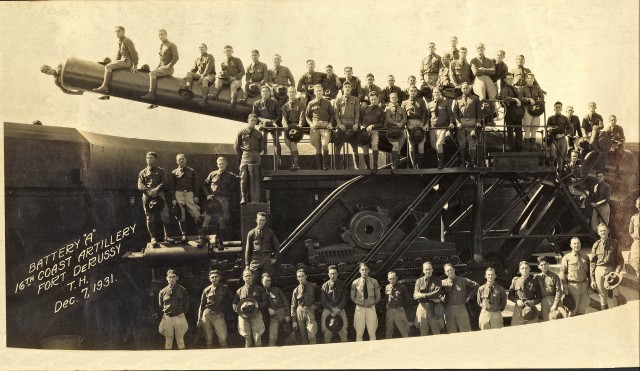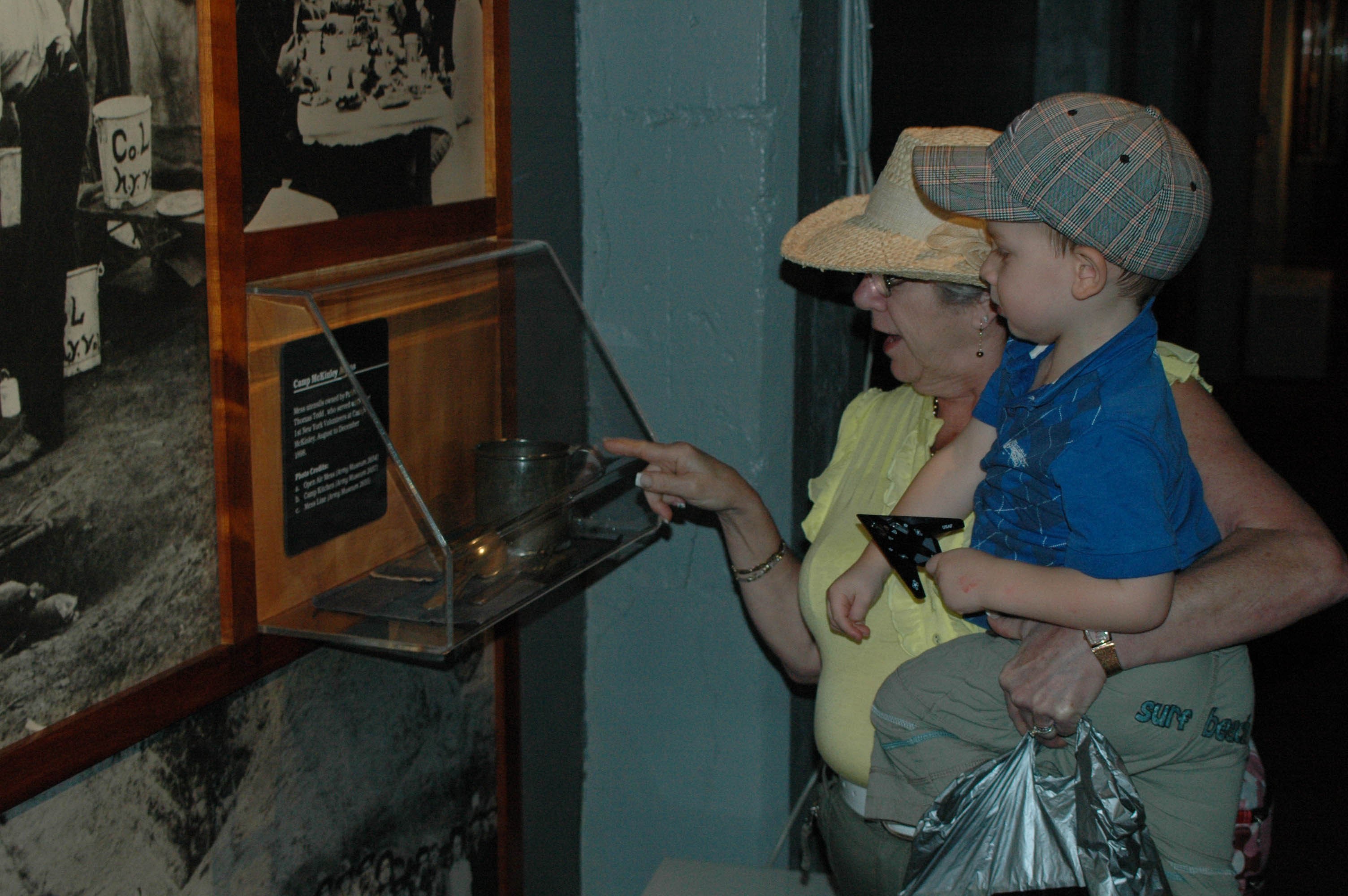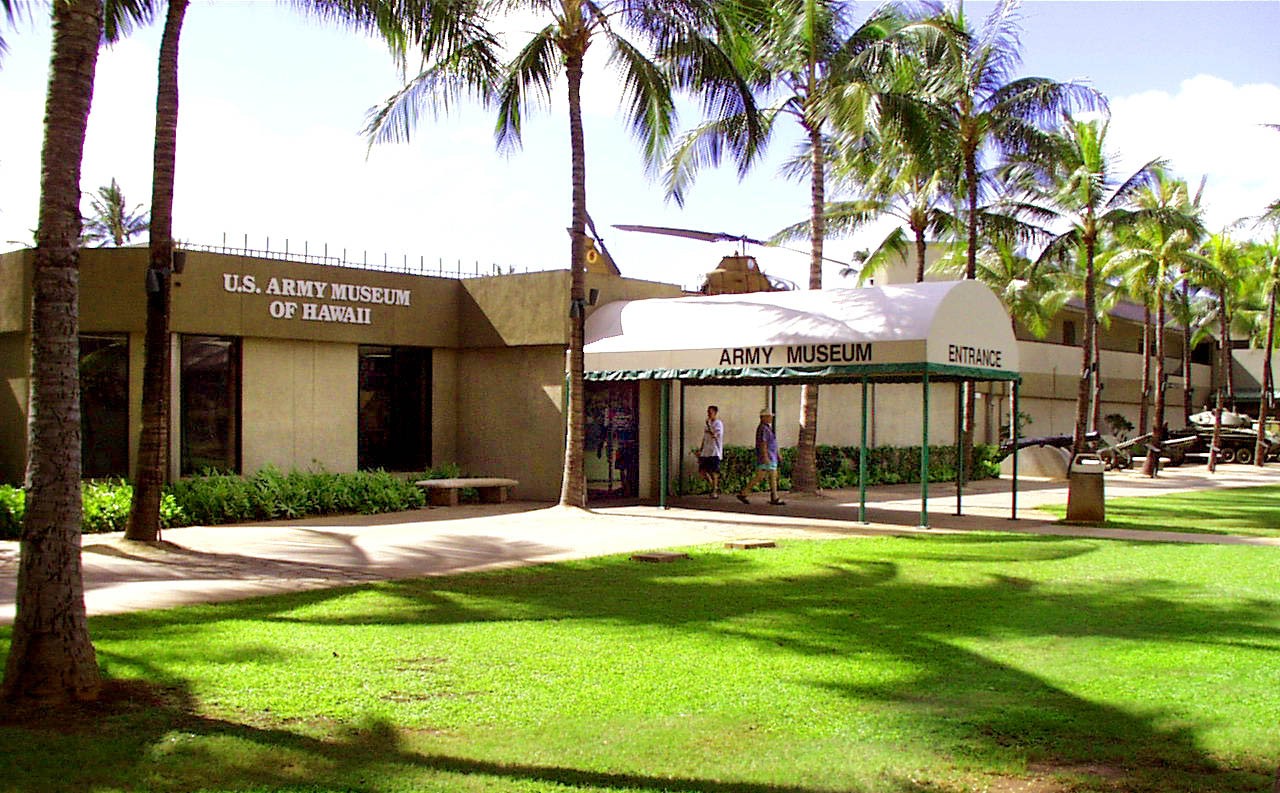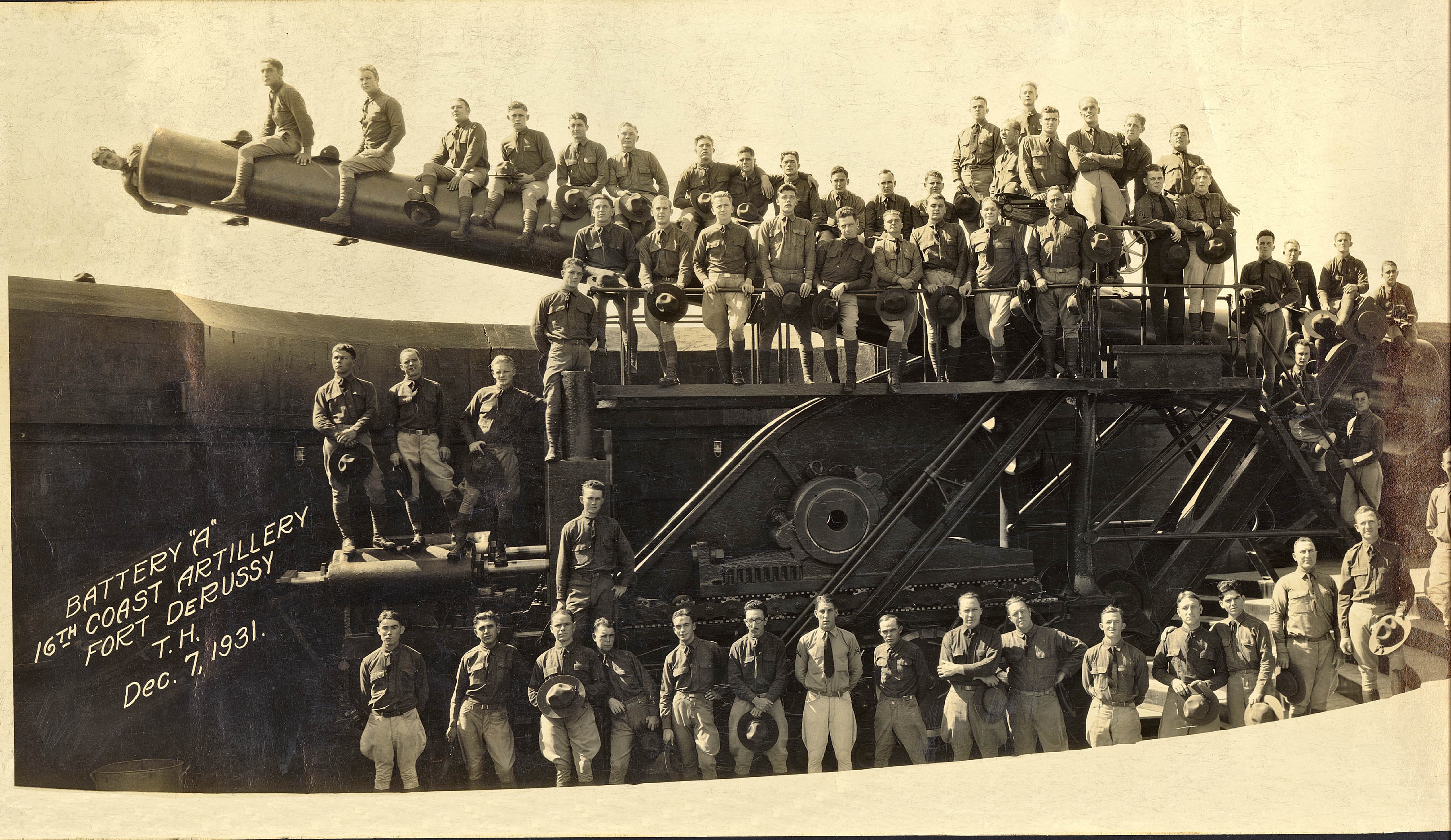FORT DERUSSY, Hawaii - The Army Museum of Hawaii, located in Fort DeRussy's Battery Randolph, in the heart of Waikiki, is a 19th century U.S. Army coastal defense gun battery that once served as a first line of defense against enemy attack on Oahu's southern shore.
"Even though Battery Randolph has been here for nearly a century, some of our island's newcomers, visitors and even local folks have yet to discover the treasures and rich military history on display here," said Judith Bowman, museum director.
The battery was built between 1909 and 1911 and gained international, national, state and local significance at a time when British, French, Russians, Germans, and even the Japanese, all had ships in the Pacific, and were expressing interest in Hawaii.
At the time, the United States was expanding its defenses westward as other nations were looking to Hawaii as an economic and militarily significant port of call in the middle of the Pacific for their merchant and naval vessels.
Fort DeRussy was part of a series of fortifications whose mission was to defend Pearl Harbor and Honolulu Harbor from attacking battleships. It comprised two artillery batteries, Battery Randolph to the east and Battery Dudley to the west.
"Besides drawing in members of the armed forces, tourists from around the world flock to the museum daily as a way to step back in time and relive history." Bowman said. "Some are interested in the late 1700s and early 1800s when King Kamehameha united the seven Hawaiian islands under a single rule, while others come to learn about the role their parents or grandparents played in World War II.
Visiting from Montreal, the Frijon family decided to take a break from the frigid conditions at home and enjoy a week in a little more temperate climate.
"We could have gone anywhere," said son Stephane Frijon, "but we wanted to see paradise."
Travelling with his parents, Benoit and Francine, and with young son Zack in tow, the family decided to pop into the museum when they eyed it while strolling down Kalia Road in Waikiki.
We enjoy history in general," explained Stephane. "This visit gives us an opportunity to learn some American history and see what the museum has to offer."
"Many visitors entering the facility don't realize that this museum is more than just about its exhibit galleries or the cannon and tanks displayed outside," Bowman said. "The building itself is an artifact and a significant part of Hawaiian history."
In its heyday, Battery Randolph had two 14-inch guns and Battery Dudley had two six-inch guns mounted on disappearing carriages. When they were installed, they were the largest guns in the entire Pacific from California to the Philippines.
"The disappearing carriages allowed the guns to remain hidden from sight of approaching battleships by solid concrete walls called parapets, capable of withstanding a direct hit from a 2,000-pound artillery shell," explained Dorian Travers, museum curator. "To get the gun into the firing position, the artillery crew tripped a lever attached to a 50-ton weight. As the weight fell, it lifted the gun tube into battery (the firing position), and the gun was then ready to fire again."
A crew of roughly 14 artillerymen would load a A,A3/4-ton shell in the breech, and then load 340 pounds of gun powder behind that.
After lobbing the 1,556-pound shells up to 14 miles out to sea, the recoil automatically pushed the gun carriage back down behind its concrete parapet, protecting the Soldiers and gun from low-angle naval fire. The gun was then reloaded again.
"A well-trained crew could fire a round downrange every 30-seconds," Travers said. "As one round was impacting its mark, the second round was already half way in flight to hit the target again."
Protecting Soldiers inside the battery, the overhead concrete was up to 12-feet thick. On the ocean side of the battery, concrete was the equivalent of 30-feet thick. The measurements were derived from a calculation based on 15 feet of concrete and 45 feet of sand, in which three feet of sand equates to one foot of concrete.
Were these weapons, based on 1890s technology, accurate'
"They were very accurate," Travers said, emphatically. "Observation points on top of Diamond Head and Tantalus were used to triangulate the distance, direction and speed of potential adversaries via telephone to the plotting room at Battery Randolph.
"The guns were capable of hitting a 20-foot target from six miles away - the equivalent of hitting a bus in Kaneohe, or on a wall 60-feet away," he explained, "with a bullet the size of a pinhead, all without the aid of a computer."
In today's dollars, this weapon system would be a bargain to operate. In 1914 terms, when a Soldier's average daily salary was $2 per day, it cost a pretty penny.
The cast iron practice projectiles cost around $55 each, whereas the armor-piercing projectile cost about $780. For both systems, the powder charge propelling the projectile was $230.
Although an engineering marvel and weapon for its day, the emplacement proved its obsolesces with advent aircraft carriers. No longer did attacking navies need to bring their ships within eyesight of the beaches in order to effectively engage targets.
Dec. 7, 1941, Japanese planes devastated the U.S. Navy Pacific Fleet in their attack on Pearl Harbor, and on the central and leeward parts of Oahu, without firing a single round at the defenses at Fort DeRussy. There was no need.
With the end of World War II came the realization that the fort was no longer capable of meeting the needs of the U.S. military in Hawaii. The giant guns were cut up and sold for scrap, having never fired a shot in anger or defense.
Battery Randolph was eventually abandoned and briefly became a warehouse storage facility.
Efforts were made in 1969 to demolish the batteries and free up the prime real estate for other useful purposes.
Battery Dudley was razed to the ground, but Battery Randolph proved more stubborn. Its concrete walls repeatedly defied destruction, and the demolition company contracted to remove the structure eventually went bankrupt in the process.
"In 1976, the Army designated Battery Randolph home of the U.S. Army Museum of Hawaii," Bowman said. "We continue to expand and improve exhibits in the museum, keeping the Army's history alive, current and relevant.
"You cannot find a better educational venue to learn about the history of the U.S. Army in Hawaii and the Pacific, and the vital role Hawaii's citizenry played in the defense of our nation."
The U.S. Army Museum of Hawaii is located in Honolulu, along the ocean side of Waikiki's Kalia Road. It is situated adjacent to the Hale Koa Hotel, at the corner of Kalia and Saratoga roads.
The museum houses a gift store that sells military memorabilia, books, clothing, military unit insignia, and World War era music, all reasonably priced.
The museum is free of charge and open to the public, Tuesday through Saturday, 9 a.m.-5 p.m., and closed on some federal holidays, but open on military holidays.
Audio tours are available.
Validated parking is available across the street from the museum, and disabled parking spaces are provided in front of the museum.
Group tours can be arranged by calling 808-438-2825.






Social Sharing